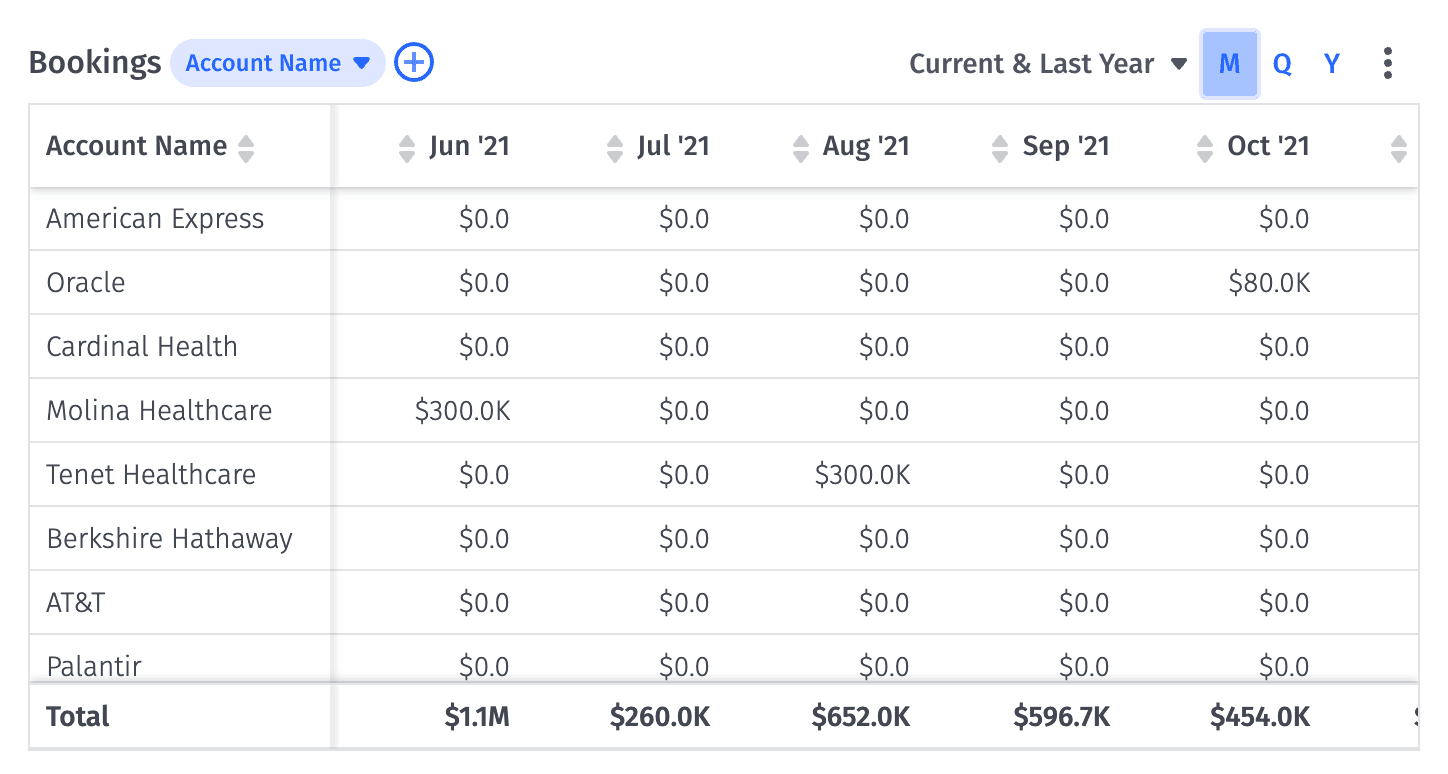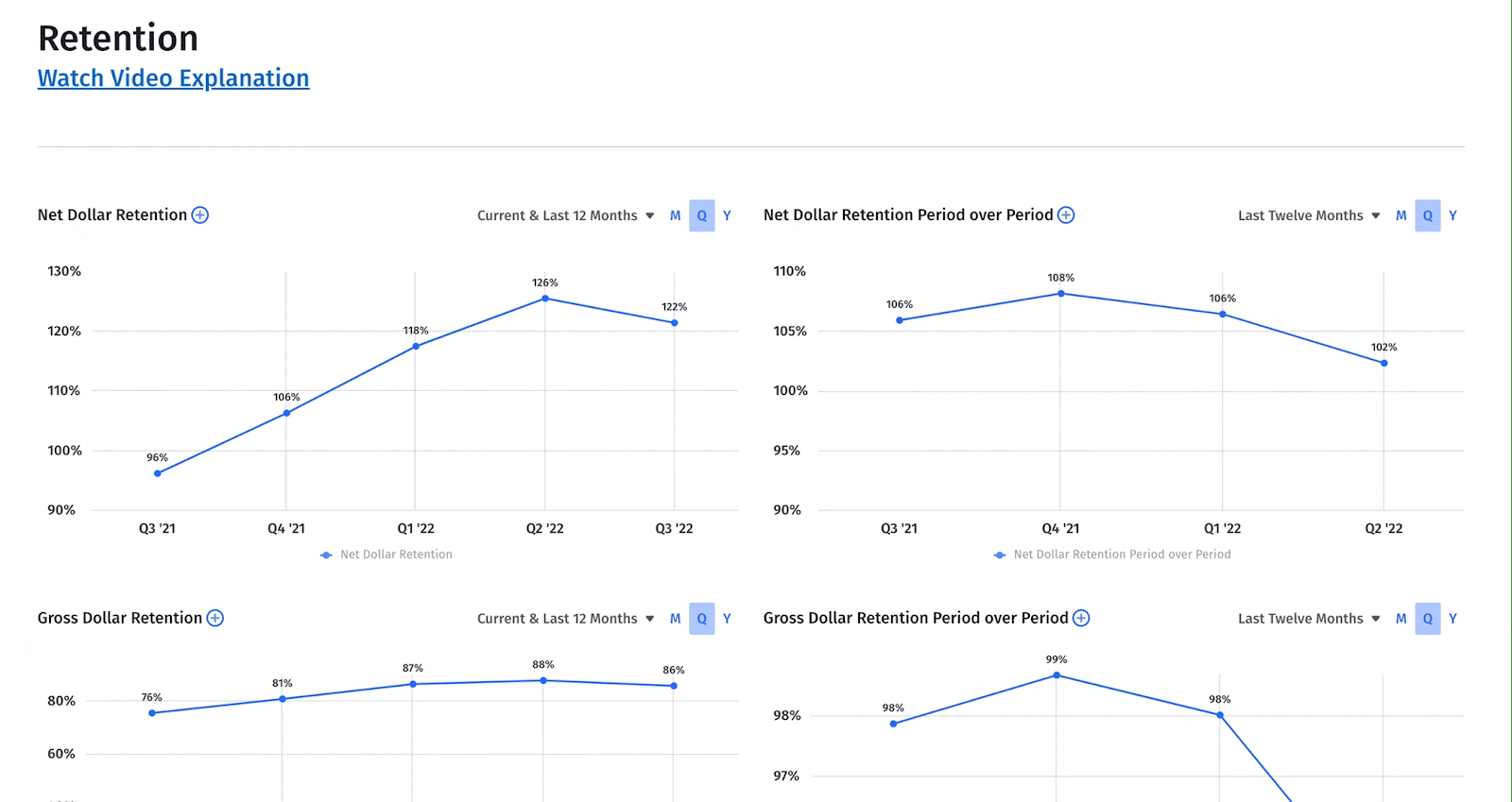Revenue growth is often the primary factor in determining SaaS valuation and the perception of whether or not a company is successful. But retention is what really sets great SaaS companies apart from good ones. That’s why customer success metrics are such a crucial part of financial analytics and business performance reporting as a whole.
When great finance and CS teams work together, they’re able to look at their business models and determine the right collection of customer success metrics to help inform support and retention strategies.
If you aren’t sure where to start for your business, consider the following eight of the most valuable customer success metrics in SaaS.
Table of Contents
What Are Customer Success Metrics?
Customer success metrics are performance indicators and data points that show how well a business can retain its customer base, including insight into CS team performance and overall customer satisfaction.
Leaders on the customer success team (whether that’s a chief customer officer, a VP/director of customer success, or a customer success manager) ultimately own these metrics. But finance teams will also analyze customer success metrics in an effort to improve financial storytelling for the business and help CS achieve their goals.
Why Do Customer Success Metrics Matter?
Customer success metrics matter because they help you understand the sustainability of your business. You want to see your sales team driving new business and capturing more of your total addressable market (TAM). But none of that matters if, after onboarding, those new customers are dissatisfied and eventually churn.
But don’t treat your customer success metrics solely as at-a-glance insights into the health of your customer base. While that’s important, the real value of tracking customer success metrics lies in your ability to dig into the “why” behind the numbers and uncover strategic insights about your business.
Finance and CS teams that have real-time visibility into the CS metrics that matter most gain a number of competitive advantages over less-informed teams.
Gain a Deeper Understanding of Revenue Growth Efficiency
Tracking customer success metrics like net revenue retention (NRR) helps you understand if you’re generating more revenue the longer you retain customers. In a subscription business, you want to create levers that ensure customers that sign today will spend more with you next year and in the years beyond. The more visibility you have into CS metrics, the easier it is to track trends in revenue growth efficiency.
Better Prioritization of the Product Roadmap
Analyzing customer success metrics like NPS scores and satisfaction scores can surface insight into the biggest pain points for your customer base. When the CS team sees that satisfaction scores are trending downward, they can proactively reach out to struggling accounts and get a better understanding of the issues. Collecting that information and reviewing it in aggregate can result in a list of highly-requested features that are missing from the product. Customer success teams can take that to their partners in product and offer value in prioritizing initiatives and setting the feature release schedule.
Clearer Visibility Into Pricing Strategy Effectiveness
Any time you update your SaaS pricing strategy, you’ll go through a long process of gathering customer feedback and analyzing options internally with leadership teams. But customer success metrics can offer unbiased insights that help you further refine your strategies. For example, tracking segmented retention numbers after a pricing strategy update will show you if there are certain subsets of customers that are negatively impacted.
Maybe small business accounts are churning at a higher rate because of the change and you want to create a new pricing tier to satisfy them. Or maybe NRR is down because you didn’t build enough levers for scaling the pricing structure. This visibility helps finance and CS teams drive strategic value for business growth.
More Proactive Headcount Planning for CS
Tracking CS metrics is as much about understanding team performance as it is about measuring business performance. The best CS teams break out some of their metrics by customer success manager to get a better feel for resource allocation and performance of individual employees.
If you see that customer satisfaction is starting to dip as customer success managers (CSMs) add more and more accounts to their rosters, it may be time to add more people to the team. The more visibility you have into this kind of information, the easier it is to address issues before they impact customers. You can determine the proper ratio of customers to CSMs and proactively manage headcount planning to meet their number.
These are just a few of the reasons that tracking customer success metrics matters. But if you want to unlock these competitive advantages, you need to make sure you’re focused on the right metrics.
8 Essential Customer Success Metrics for SaaS Companies
The best collection of customer success metrics gives you clear visibility from onboarding to active customer, customer support experiences, and renewals.
A dashboard that collects the following eight metrics will facilitate collaboration between finance, customer success, and executive leadership by not only showing the overall health of your customer base, but also how customer engagement efforts contribute to overall company growth.
1. Customer Health Score: Net Promoter Score (NPS) vs. Customer Satisfaction Score (CSAT)
Net promoter score and customer satisfaction score are two of the most basic customer success metrics. They help you get a general understanding of loyalty among existing customers and how your success team is performing throughout the customer lifecycle.
Net promoter score gives companies a customer satisfaction benchmark based on one question — how likely are you to recommend our product on a scale of 1-10?
The calculation for NPS based on these scores is simple: Percentage of promoters – Percentage of detractors
Typically, NPS survey answers break out into three categories to help you make this calculation:
- Detractors (response between one and six)
- Passives (response between seven and eight)
- Promoters (response between nine and 10)
Whereas NPS helps CS teams understand how happy their accounts are with their long-term experiences, CSAT has a more short-term focus. It uses a five-point scale ranging from very unsatisfied to unsatisfied, neutral, satisfied, and very satisfied.
To calculate your overall CSAT, start by dividing the number of “satisfied” and “very satisfied” responses by total number of responses.
Advanced customer success teams at SaaS companies take these kinds of basic health scores to another level with the help of software like Vitally. They combine multiple metrics to bucket customers into segments of “poor,” “concerning,” or “healthy” and track changes more dynamically.
2. New Customer Bookings
An effective customer success metrics dashboard should include insight into bookings data for new customers. Even though the role of the CS team is to maximize customer loyalty, visibility into the pipeline of incoming accounts is critical to proactive headcount planning and team management.

Teams shouldn’t be making every decision in a reactive way as new customers sign on. But CS leaders can have more informed discussions with sales leaders based on new bookings data, creating a stronger partnership between the two teams and a smoother handoff to customer onboarding.
3. Bookings Up for Renewal
Customer success teams don’t just want to help retain customers — they have to identify opportunities for cross-sells and upgrades that will increase expansion revenue. There are other metrics that will help track the effectiveness of cross/upselling efforts. But the bookings up for renewal metric is what helps CS prioritize those efforts.

An effective dashboard of customer success metrics shows more than just the total number of customer accounts up for renewal and the renewal rate. Knowing the bookings numbers for accounts in the renewal cycle helps CS teams allocate time and resources in ways that will have the most meaningful impact on the company’s top-line growth. And the more efficiently CS helps drive top-line growth, the closer a company can get to reaching bottom line profitability.
4. Logo Retention Rate and Customer Churn Rate
A CS team exists to maximize the customer experience, drive product adoption and consistent product usage, and continuously educate existing customers about the product roadmap and new features. All of that effort serves to maximize logo retention and minimize customer attrition rates.

Your logo retention rate is the percentage of customers who renewed compared to the total number of customers who were up for renewal. And your churn rate is the inverse of that metric (the number of churned customers relative to the total number of renewal opportunities, expressed as a percentage).
Logo and customer retention rates are critical components of a customer success metrics dashboard because they help you benchmark performance against historical data. While industry benchmarks say 90-95% retention for enterprise, 85% for mid-market, and 70-80% for small businesses are common, you should track performance for your unique business model.
5. Net Revenue Retention
Net revenue retention is a critical SaaS metric that CS teams are directly responsible for. It’s the primary indicator of whether or not your pricing strategy is effectively increasing average revenue per customer as they renew their contracts.

You can calculate your net revenue retention by adding starting monthly recurring revenue (MRR) or annual recurring revenue (ARR) to change in MRR/ARR and dividing by starting MRR/ARR for the given period of time.
The golden benchmark for NRR is 120%. If a CS can consistently maintain that kind of net revenue retention rate, they’ll put their companies in the best position to maximize customer lifetime value (CLV or LTV) and growth efficiency.
6. Gross Revenue Retention
Unlike net revenue retention, gross revenue retention doesn’t take upsell or expansion revenue into account. Instead, it focuses only on the amount of existing revenue you retained in a given period.

This customer success metric provides insight into the amount of churn and downgrade MRR/ARR your company experiences. While it’s impossible to eliminate all churn and downgrade scenarios, a SaaS business should aim for around 90% gross revenue retention.
7. First Contact Resolution Rate
First contact resolution rate is a measure of how many customer support tickets are resolved the first time an active user reaches out for help. Customer support teams own this metric as it’s a direct indication of how efficiently they can engage and follow up with users who are experiencing issues with the product.
Some issues can be too complex to solve on first contact. However, the shorter your response times are for connecting with customers, and the more efficiently you can resolve issues, the more likely you are to maintain customer satisfaction.
This metric directly relates to customer effort score (CES), which measures the amount of effort it takes for customers to get their issues solved. Customer service teams that minimize CES ultimately strengthen customer relationships and improve customer experiences.
8. Expansion CAC Ratio and Customer Retention Costs
It’s important to include customer retention costs in any operational efficiency metric calculations. If you don’t you risk measuring things like expansion customer acquisition cost (CAC) ratio incorrectly. Expansion CAC ratio compares the sales, marketing, and CS expenses to the cross-sell and upsell revenue you generate in a given period.
The priority for CS teams is to retain customers. But if the amount of time and resources you put into retaining those customers is ultimately hurting the business, you need to make strategic changes. Performing a customer retention analysis can help you spot areas where you’re spending many resources for few returns or opportunities to double down on customer segments that are most lucrative.
Track Your SaaS Customer Success Metrics and KPIs in Real Time with Mosaic
The customer success metrics listed here are critical data points for just about any SaaS business. But the handful of customer success KPIs that you focus on most will depend on your specific business model — and they may change as your business evolves.
While these are common and important metrics, they aren’t necessarily easy to calculate. The process of pulling and aggregating data from your CRM, ERP, HRIS, billing systems, and customer success software can be so time consuming that by the time you calculate any of these metrics, any insights you gain are already stale.
Connecting your systems to Mosaic solves this problem by giving you real-time insight into the SaaS financial metrics and customer success metrics that matter most to your business. And because Mosaic integrates directly with your source systems, you can drill down deeper into the metrics with just a few clicks to truly understand the “why” behind the data (and even create metrics of your own with our Metrics Builder. Here is just one example of an out-of-the-box template for retention metrics.

Want to learn how Mosaic can help finance and CS teams collaborate to drive customer engagement and revenue growth? Request a personalized demo to get more information.
Customer Success Metrics FAQs
How does Mosaic help in tracking customer success metrics?
Mosaic is a Strategic Finance Platform that aggregates data from various business tools into an all-inclusive view of financial and operational metrics — including your customer metrics. This visibility helps you track and analyze critical indicators to make data-driven decisions for improving customer success.
What is the significance of Net Promoter Score in customer success metrics?
How can churn rate impact SaaS businesses?
Own the of your business.

